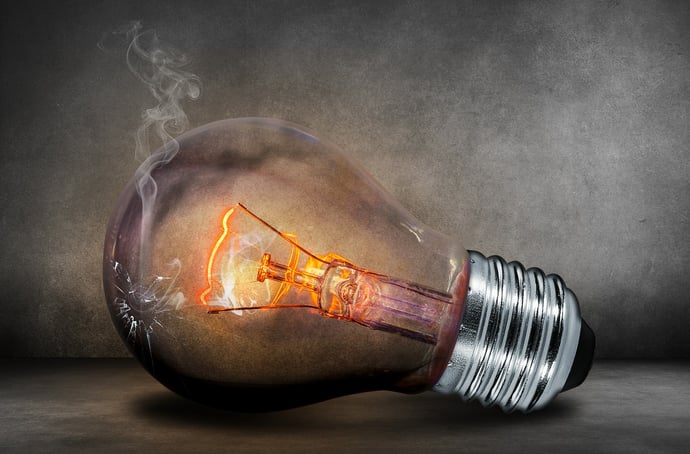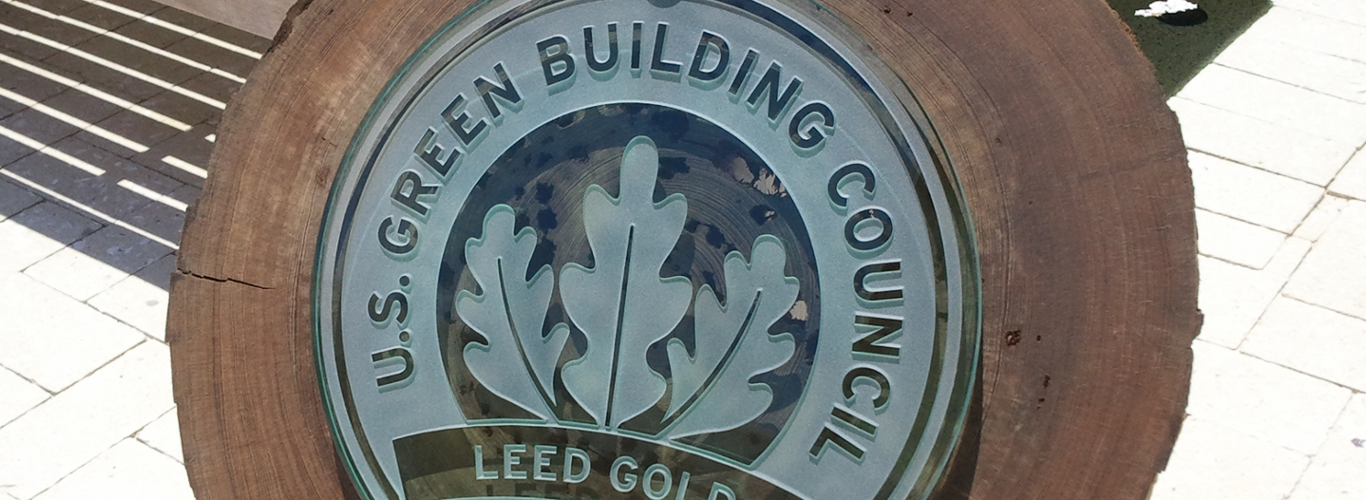
Reinventing the first BRIGHT idea:
Thomas Edison’s 19th century invention of the incandescent light, which has an electric current running through a wire filament and heating it until it starts to glow, has been phased out by federal legislation.
So, what's the right answer for YOUR business? Is it CFLs? LEDs?
You want an energy efficient building - Let these bulbs light the way!
Although they are cheap to produce, incandescent bulbs aren't very energy efficient. Many businesses saw this as being a problem years before government intervention, and initially replaced them with the compact fluorescent lamp (CFLs), which has an electric current driven through a tube containing argon and a small amount of mercury vapor.
Now, the trend in lighting is focusing on the use of LEDs (light-emitting diodes) that are illuminated solely by the movement of electrons in a semiconductor material.
1. WHY LED
LEDs provide light nearly equivalent in quality and color to the old incandescent bulbs, while offering both efficiency and lifetime improvements over CFLs. For example:
- CFLs usually take some time after switching them on for them to become fully bright
- Disposing of CFLs is cumbersome due to the environmentally harmful mercury they contain
- While some people see the fact that LEDs only emit light in a specific direction and may not spread as evenly CFLs, this directness allows for more efficient light and energy use
- They also are completely programmable and will allow for smarter management of lighting in your building
2. Why Not LED
The drawback to LED lighting, for the moment, is sticker shock. A typical LED bulb can cost more than $20. CFLs are certainly cheaper, but the good news is that the rapidly evolving LED technology is coming down in price.
MORE LIKE THIS: Green Building Materials You Probably Don't Know About
3. How Energy Efficient Are They?
Although once known mainly for indicator and traffic lights, LEDs in white light, general illumination applications are one of today's most energy-efficient and rapidly-developing technologies.
According to ENERGY STAR, CFLs use 25-35% less energy than incandescent bulbs, but if you really want to make the biggest environmental impact, choosing LEDs is the way to go. Some LEDs, especially those rated by ENERGY STAR, use 75% less energy than incandescent lighting.
But energy efficiency isn't just about how much electricity it takes for them to be effective... what about lifespan? The less we have to manufacture, the less energy we use there too!
The average life span of a LED bulb is 50,000 hours and the CFL bulb lasts an average of 8,000 hours. Your incandescent bulbs? 1,200 hours.
4. Big Picture Implications
According to the Department of Energy (DOE) and the U.S. Environmental Protection Agency (EPA), lighting in industrial and commercial buildings accounts for close to 71 percent of overall lighting electricity use in the U.S. and consumes nearly 35 percent of the electricity used in the nation's commercial buildings - and still much of this lighting is comprised of those inefficient linear fluorescents
Among all energy efficient measures available to a commercial facility, lighting is one of the biggest energy hogs, so making changes here offers the shortest payback and strongest return on investment over any other change you could make with your existing structure (followed closely by HVAC measures).
5. Other ways it's awesome
They're cool:
LEDs emit very little heat. In contrast, CFLs release about 80% of their energy as heat, according to Energy.gov. Incandescent bulbs can reach temperatures of over 330 degrees Fahrenheit! But LEDs operate at a cool 87 degrees. Savings here can be seen in the amount of A/C your business uses in order keep the work environment cool.
They create value:
Converting an existing building to LED lighting or installing LED lighting in a new building creates a compelling value proposition for the building owner. Along with reduced electricity consumption and lower cooling costs, the economics of LED lights can result in recovery of the cost of the investment in less than one year in some cases. LED fixtures can now generate more lumens per watt, meaning more bang for your buck.
Maintenance is cheaper:
There are hidden savings in maintenance costs. Many LED fixtures are rated for lifetimes upward of 100,000 hours, without any need for maintenance.
You hate paying taxes:
And did I mention Tax Rebates? Yes, there are deductions for Energy Efficient Commercial Buildings through a program called 179D. The IRS needs a certification that a licensed engineer or contractor can provide to you by using a software program that is approved by the IRS for making the 179D energy savings calculation.
This tax deduction is based upon your building’s square footage, so the bigger the building, the bigger the potential savings.
6. How to get started
There are many factors to consider when you plan a conversion of an existing facility. A conversion can range from simple lamp replacement to complete fixture retrofit and is highly dependent on your overall goals.
If you feel the need, there are lighting design companies available to help you once you make a decision to convert your building LED lighting. There are also calculators online to assist you with determining your ROI. In many cases, LED solid-state lighting (SSL) will work with conventional wiring and dimmers.
You should make sure the LED lighting is compatible with your emergency lighting requirements, and you may want to phase its installation in your building. LEDs are more efficient at directing light where it is needed and often do not require a one-to-one trade-off. That said, a slower conversion may be best in order to ensure that your end result meets your expectations regarding user experiences.
CONCLUSION:
It’s hard to beat the value offered by modern LEDs. Not only are their prices getting more affordable every day, they also last up to decades longer than the competition.
Speaking of competition, our firm can help you become a competitive differentiator by having a LEED certified building. According to the USGBC, US Green Building Council, LEED-certified buildings that have lower operating costs and better indoor environmental quality are more attractive to a growing group of corporate, public and individual clients.
Owners of green buildings reported that their ROI improved by 19.2% on average for existing building green projects and 9.9% on average for new projects. LEED-certified buildings are also demonstrating increased recruitment and retention rates and increased productivity benefits for employers.
Schedule a free consultation today!


